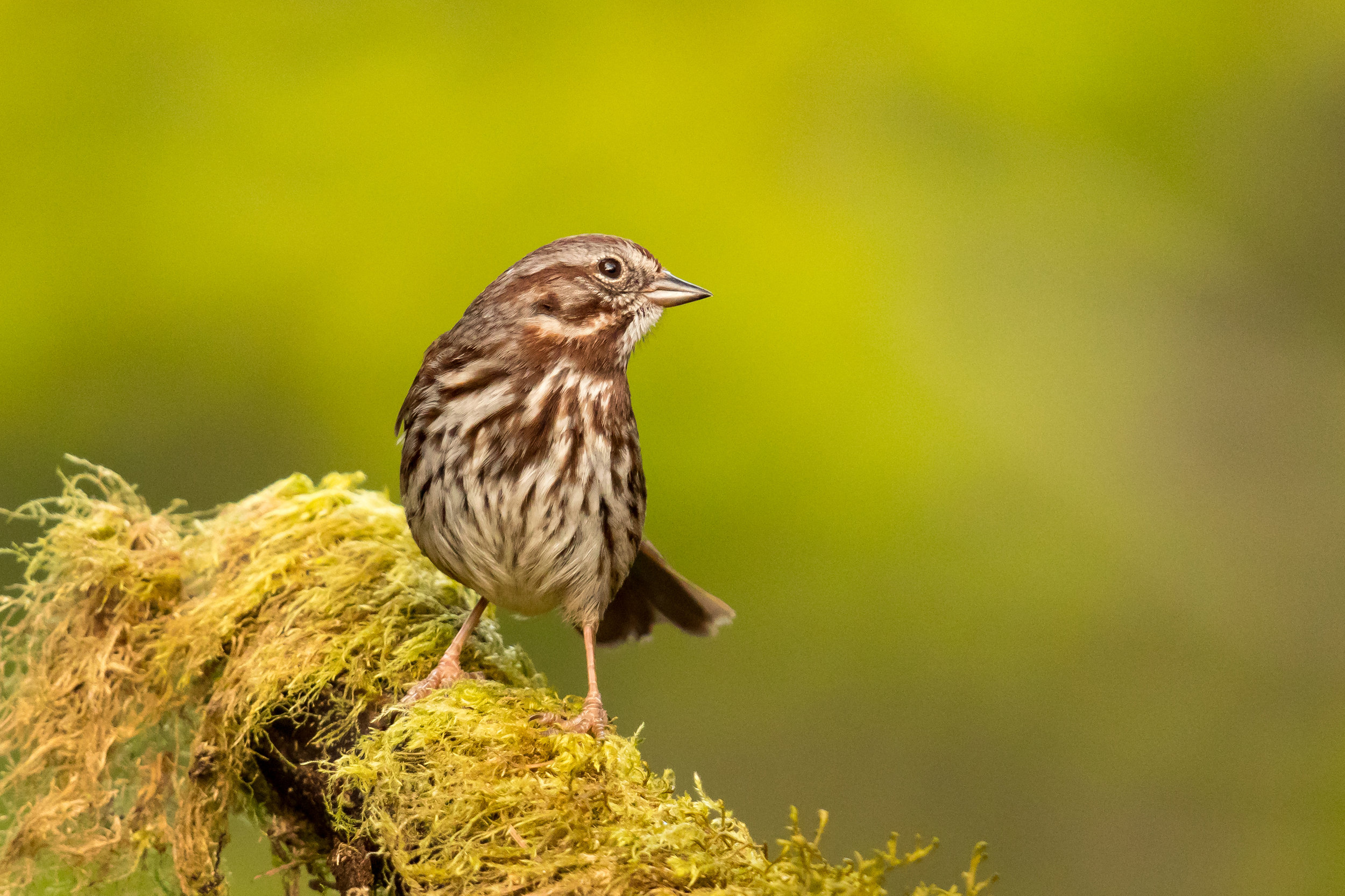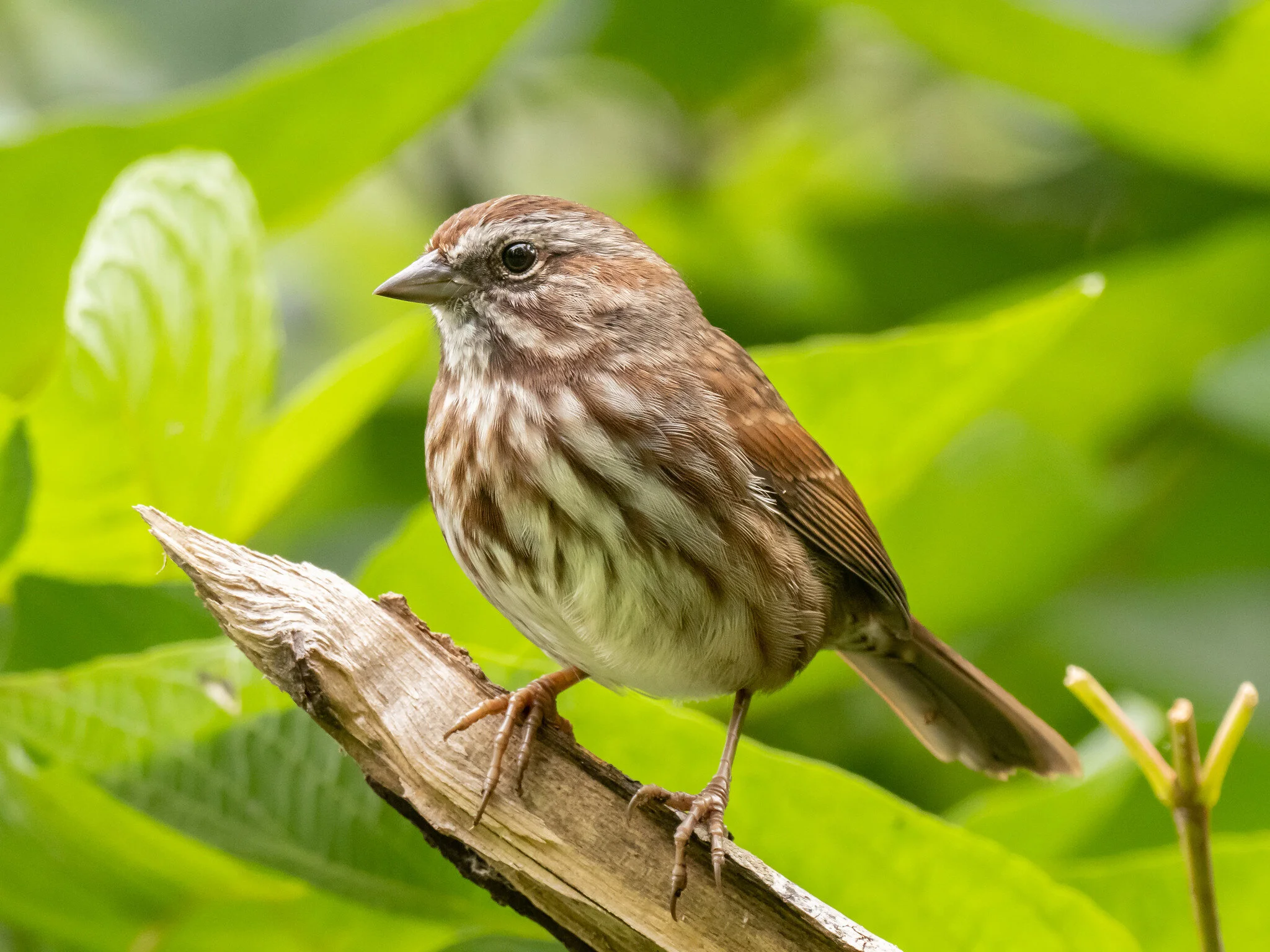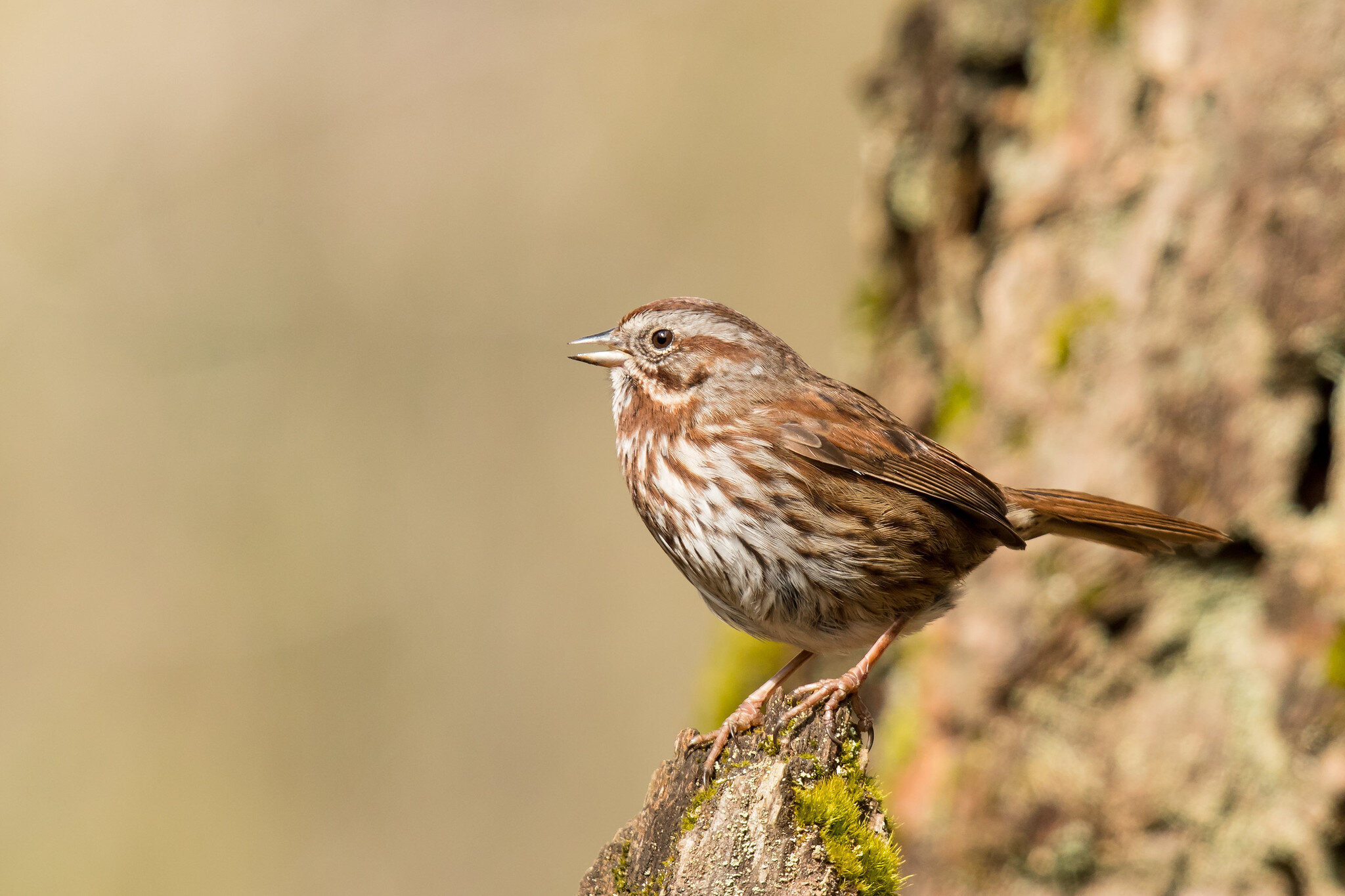Bird of the Month: Song Sparrow
Song Sparrow, PC: Mick Thompson
Melospiza melodia
Length 6.25”
Wingspan 8.25”
Weight 0.7 oz (20 g)
AOU Alpha Code SOSP
By Andy McCormick
Our most familiar backyard bird, the Song Sparrow, is remarkable in its variety, song, and success.
The Song Sparrow is one of the most common birds in North America. However, it has demonstrated an amazing ability to adapt to its surroundings and today there is a wide range of variation in color and size in this species across the continent. In all, 52 subspecies have been named and 24 of them are distinguishable in the field (Arcese, et al). The “Pacific Northwest” group populates the area from western British Columbia, through Washington, northern Idaho, Oregon, and south to northern California. Song Sparrows in this group are somewhat large and dark sooty or dark rusty colored.
GLOGER’S RULE
Rusty-colored Song Sparrow, PC: Mick Thompson
In general, color variation follows Gloger’s Rule, which holds that darker birds breed in areas of higher relative humidity and lighter birds breed in areas of lower relative humidity. The darkest Song Sparrows are found in Alaska and the Pacific Northwest, and the lightest are found in the warmer Southwest (Arcese, et al).
Song Sparrows favor brushy habitats and will often be scratching on the ground or foraging on low branches. They respond well to pishing and birders can get good looks at them when they increase their chip note frequency and often perch in full view.
A GOOD BIRD TO LEARN WELL
Years ago a senior birder gave me some good advice regarding birding in the Pacific Northwest. That is, to assume that every sparrow is a Song Sparrow unless otherwise identified. I have since modified this to limit this guideline to every dark streaked sparrow in brushy areas. You will need to see other field marks to definitively identify other sparrows.
Song Sparrows have a long, rounded tail, which is usually cocked when foraging. They have a clear gray eyebrow and gray cheek patch (Alderfer). The background to the streaking on chest and flanks will be gray in PNW birds. In other parts of the country the chest and belly will be whiter with dark streaks. Many Song Sparrows have a dark central breast spot, but this field mark alone is not definitive, as other sparrows also have central breast spots.
Early studies of the plumage variations in the Song Sparrow were conducted by Margaret Morse Nice in the 1920s. Her work set an early standard for the integration of behavioral and ecological research in animals as she used the Song Sparrow as the focus of her work (Bell and Kennedy, Arcese, et al). Subspecies studies today are based on her groundbreaking work.
ADAPTABILITY BREEDS SUCCESS
Song Sparrow spotted in Redmond, WA. PC: Mick Thompson
The incredible number of subspecies of Song Sparrow that have evolved demonstrates the adaptability of this bird. It is found in a variety of habitats and climates while showing a preference for brushy areas close to water. Male Song Sparrows defend only a small territory for breeding, which leaves space for others and often leads to abundant numbers of Song Sparrows in suitable habitat.
The female Song Sparrow builds an open cup nest on or near the ground composed of weeds, grass, leaves, strips of bark, and animal hair. Usually four pale greenish-white eggs are deposited and incubated for about two weeks. Both parents feed the nestlings, which can leave the nest in another 10-12 days. They remain with the parents for about three weeks (Kaufman). Song Sparrow pairs can produce two to three broods in good breeding years and in some cases, males will mate with more than one female (Arcese, et al).
MELODIOUS SONGSTER
The sweet song of the Song Sparrow is appreciated by most birders and we are well-advised to learn both the song and call note well, as successful identification by ear will save birders a lot of time searching for the singing bird. Good recordings of the song and call of the Song Sparrow can be heard at the Macaulay Library.
The Song Sparrow shares the genus Melospiza, with Lincoln’s Sparrow (M. lincolnii) and the Swamp Sparrow (M. georgiana). The genus name is Greek for song finch from melos, song, and spiza, the chaffinch. The species epithet melodia is from the Latin for a pleasant song (Holloway). And sing it does. In all seasons it is possible to hear the wonderful song of the Song Sparrow.
ABUNDANT IN ITS RANGE
The Song Sparrow is considered common and abundant in parts of its range. However, we are advised against complacency regarding its status given the extirpation of the Song Sparrow due to habitat loss from fire on Santa Barbara Island, and development of wetlands in the San Francisco Bay area. It is an important lesson to remind us of the demise of the Passenger Pigeon, an abundant species which had a rapid decline leading to extinction resulting from loss of habitat following the felling of beech tree forests in Eastern North America.
Photo credit to Mick Thompson. References available upon request from amccormick@eastsideaudubon.org.





